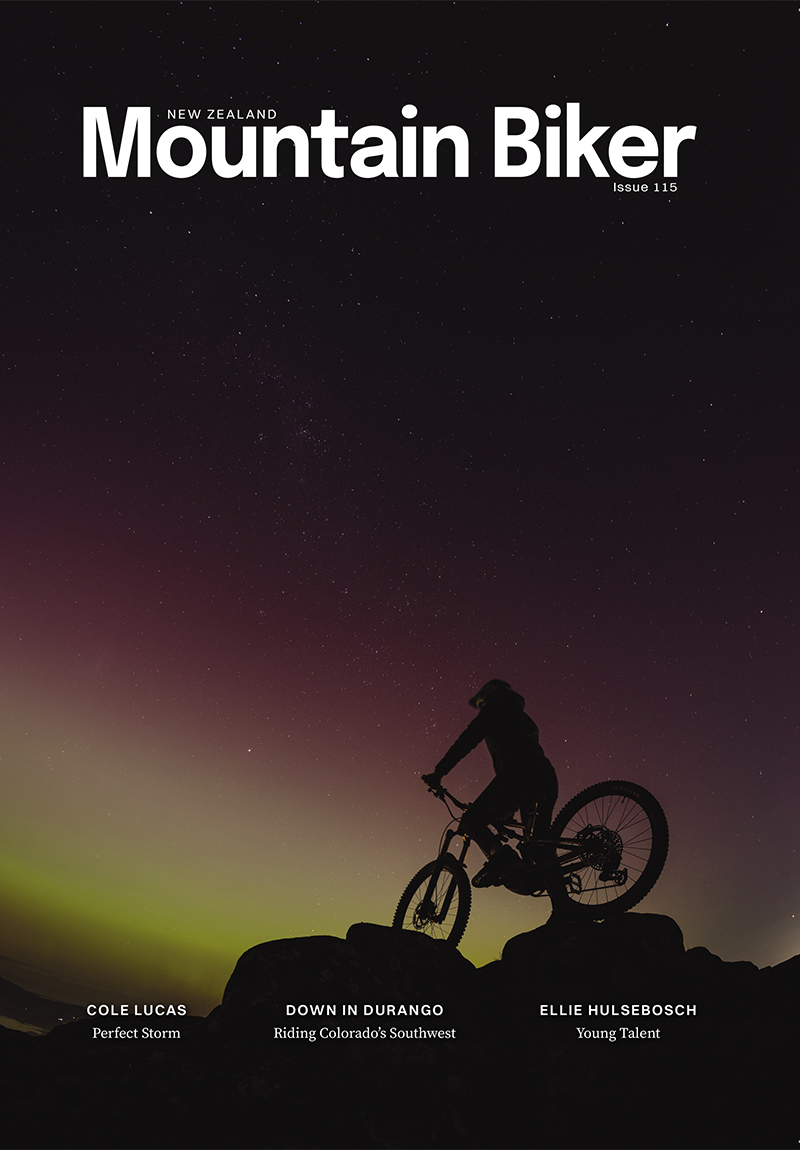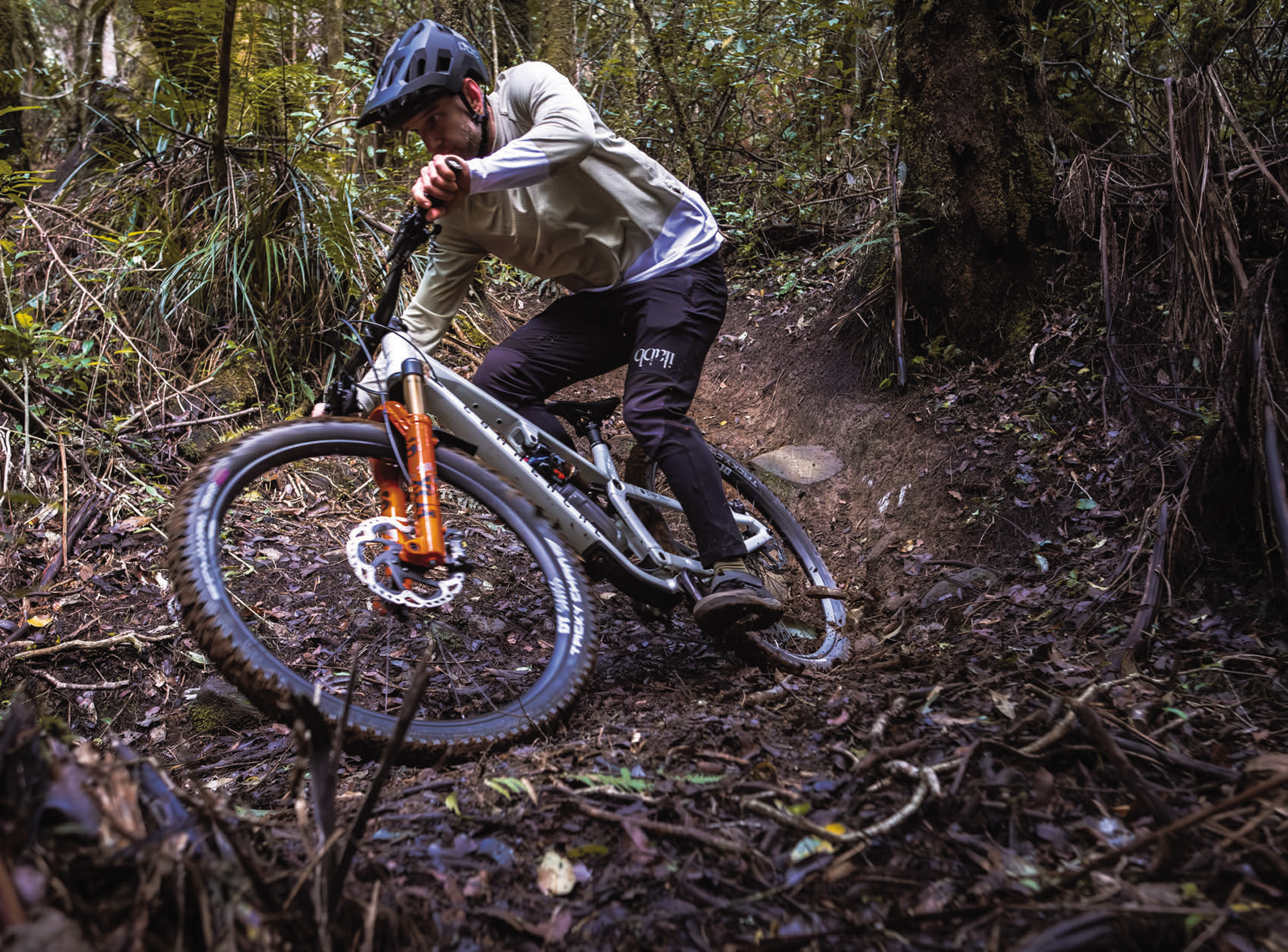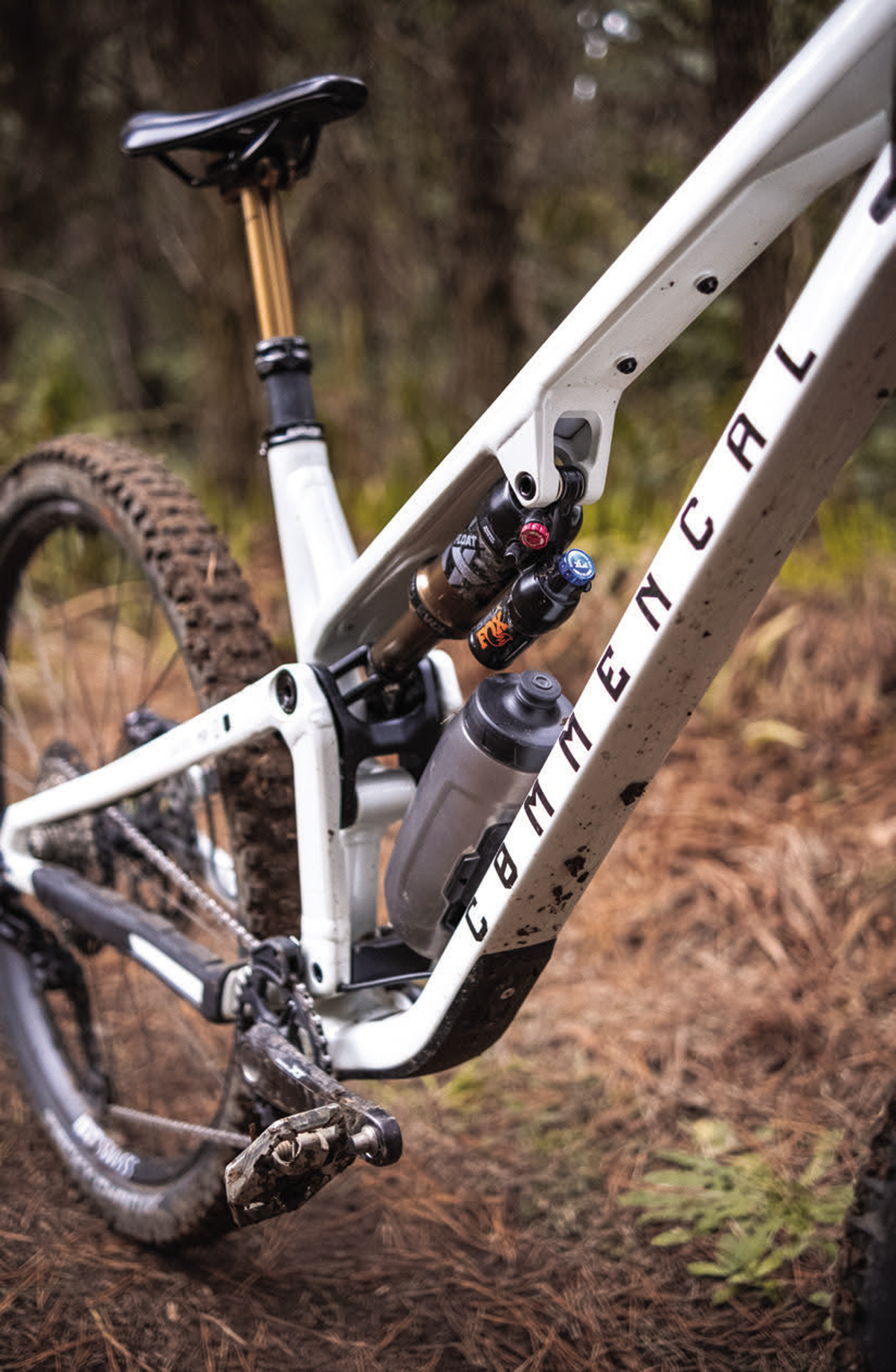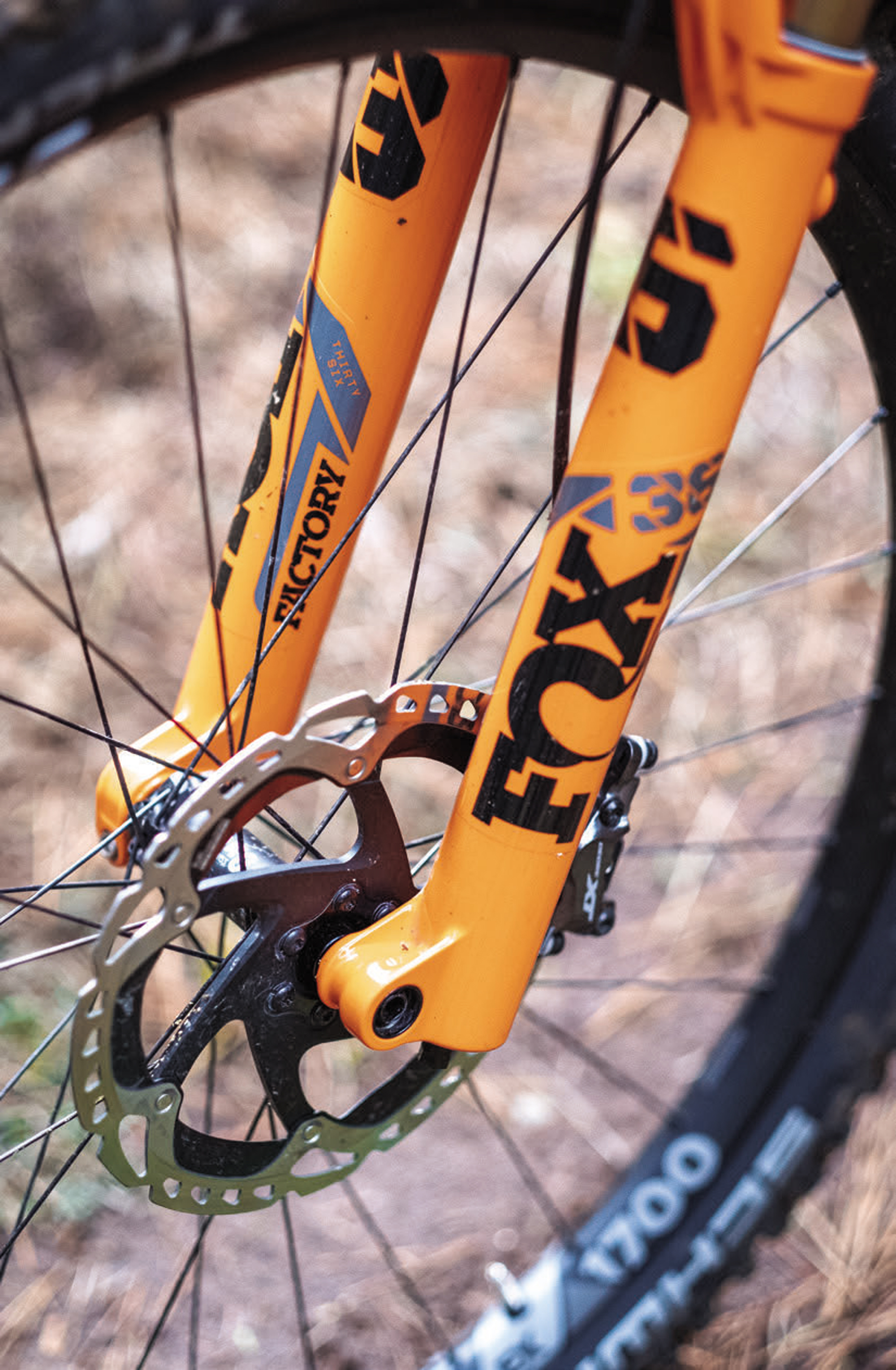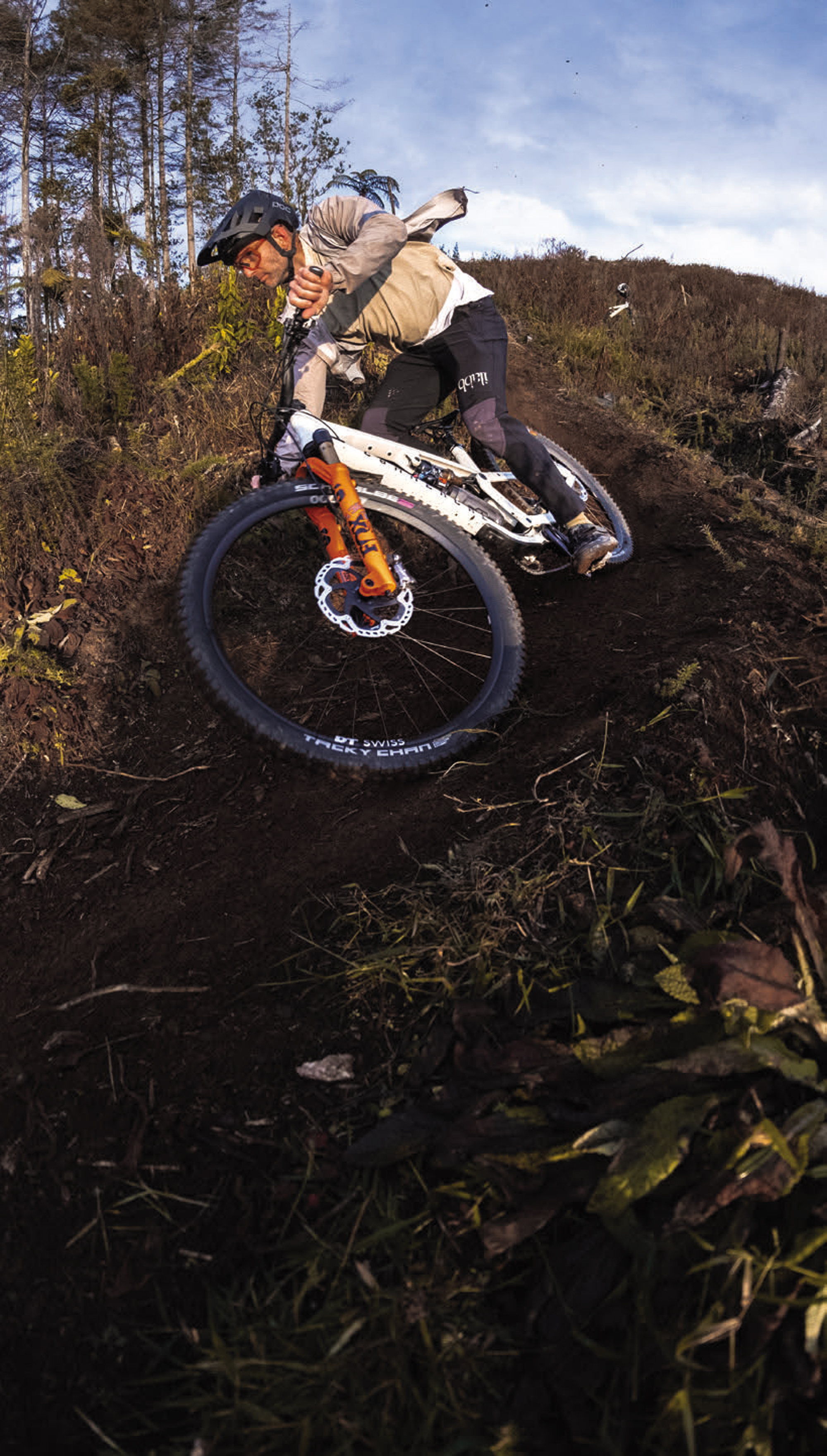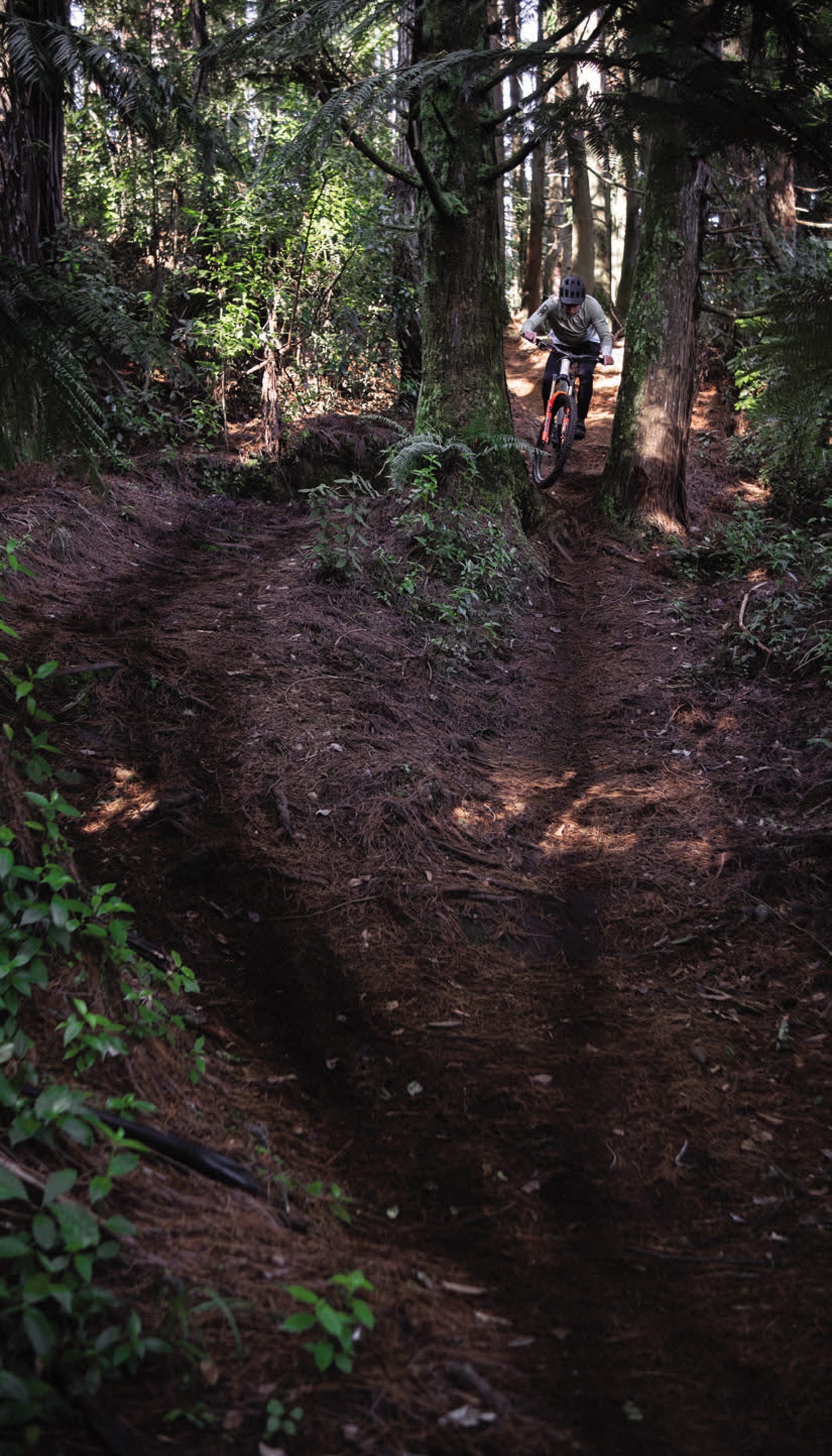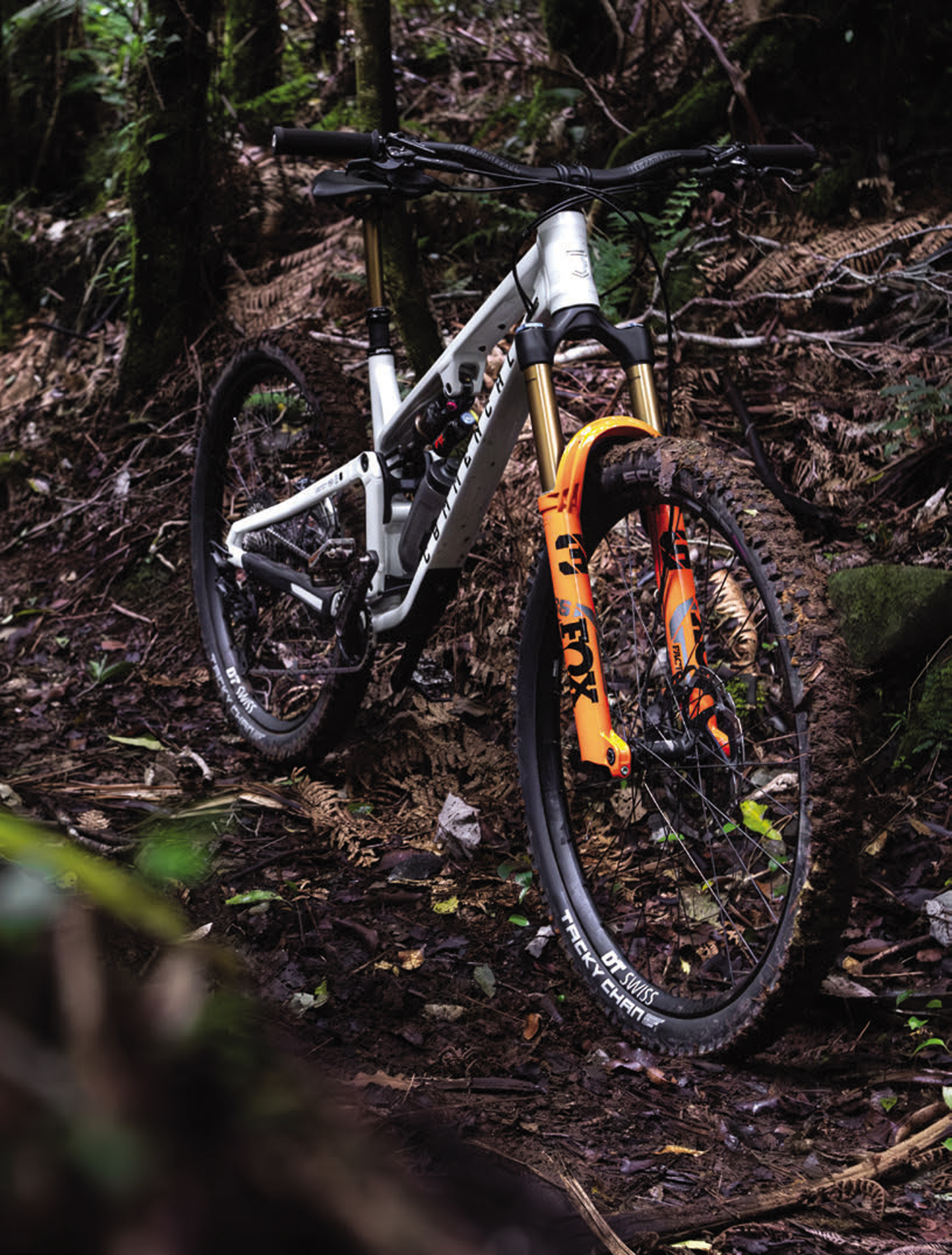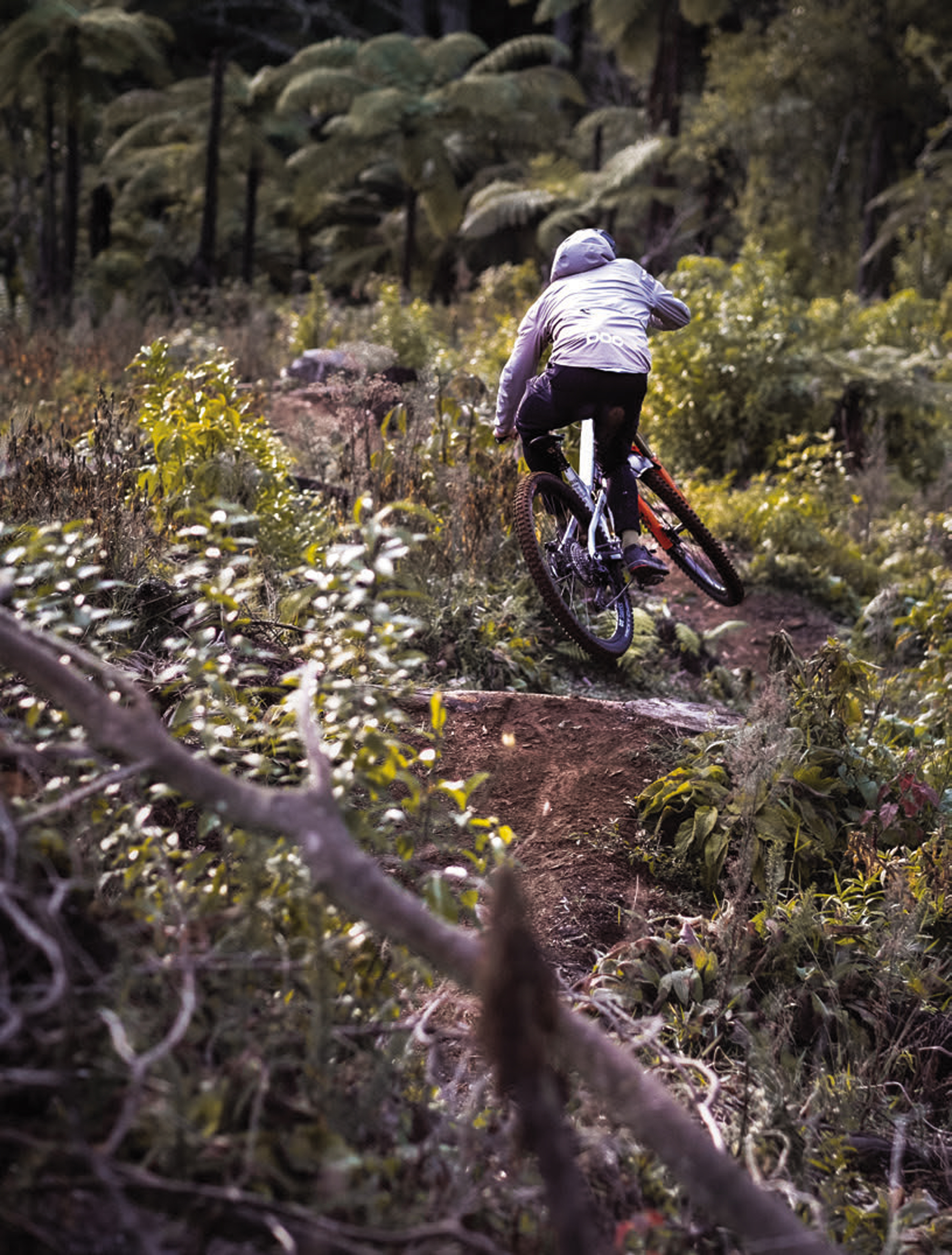Words Lester Perry
Images Bevan Cowan
RRP $10,000
Distributor Commencal New Zealand
Since its creation in the year 2000, Commencal has been a mainstay in the downhill racing scene. Max Commencal, the BMIC (Big Man In Charge), enjoyed earlier success with SUNN Bicycles, a BMX company he formed in 1984. By the early 90’s, SUNN shifted its focus to Downhill MTB racing.
Beneath names like Nicolas Vouilloz, Anne- Caroline Chausson, Cedric Gracia, and other greats, the SUNN Downhill team amassed multiple world titles aboard their innovative downhill bikes.
Under the Commencal brand, their riders remain some of the sport’s winningest to this day; at any World Cup Downhill, across all categories, you’ll likely see a Commencal rider on the podium. This hunger for competition drives the development and direction of the now global, direct-to-consumer brand. The Meta V5 is a product of their Commencal Enduro Project and the four years of development under team riders that preceded its launch.
Development
Applying the same development theory and methods that brought downhill success, the Meta V5 was created to be Commencal’s comprehensive Enduro Race bike. Commencal aimed to provide their racers with one platform that would excel across all scenarios they’re presented with over an Enduro World Cup season. Alex Rudeau proved their development process was on point, securing himself five podium finishes and third overall in the 2023 Enduro World Series. The proof is in the pudding.
Frameset
Keeping with Commencal tradition, the frame is 100% alloy like the rest of their range—not a carbon fibre in sight. Rolling on 29er wheels, with 150mm rear travel and 160mm up front, this bike strikes the sweet spot of travel vs. pedalling ability and agility. Carrying speed is key to Enduro and the V5 delivers.
An alloy frame would be a prime candidate for a threaded bottom bracket but, for whatever reason, Commencal has stuck with a bb92 press- fit style. In fairness, I’d rather have a press-fit in an alloy frame than a carbon one, so I guess they’ve landed in a bit of a middle ground on the V5.
The frame features a plethora of tubing profiles; there is not a single ‘regular’ round tube anywhere. Depending on location, each tube is shaped to achieve specific strength, weight and compliance. Under the top tube is an accessory mount, and there’s a bottle cage mount situated in a small channel indented in the downtube tube. As is customary on most bikes today, a UDH hanger graces the dropouts.
The front and rear triangles connect with a series of bolts, bearings, and pivots that make up the VCS (Virtual Contact System) linkage. Ten bearings are spread through the swingarm’s five pivot points. The swingarm has some smart subtleties: bearing caps help keep grime out and expander plugs in the pivot axles help keep them tight. The lower end of the shock features a flip chip, allowing for a small amount of geometry customisation.
Let’s get through the details before looking at my thoughts after a couple of months aboard the V5:
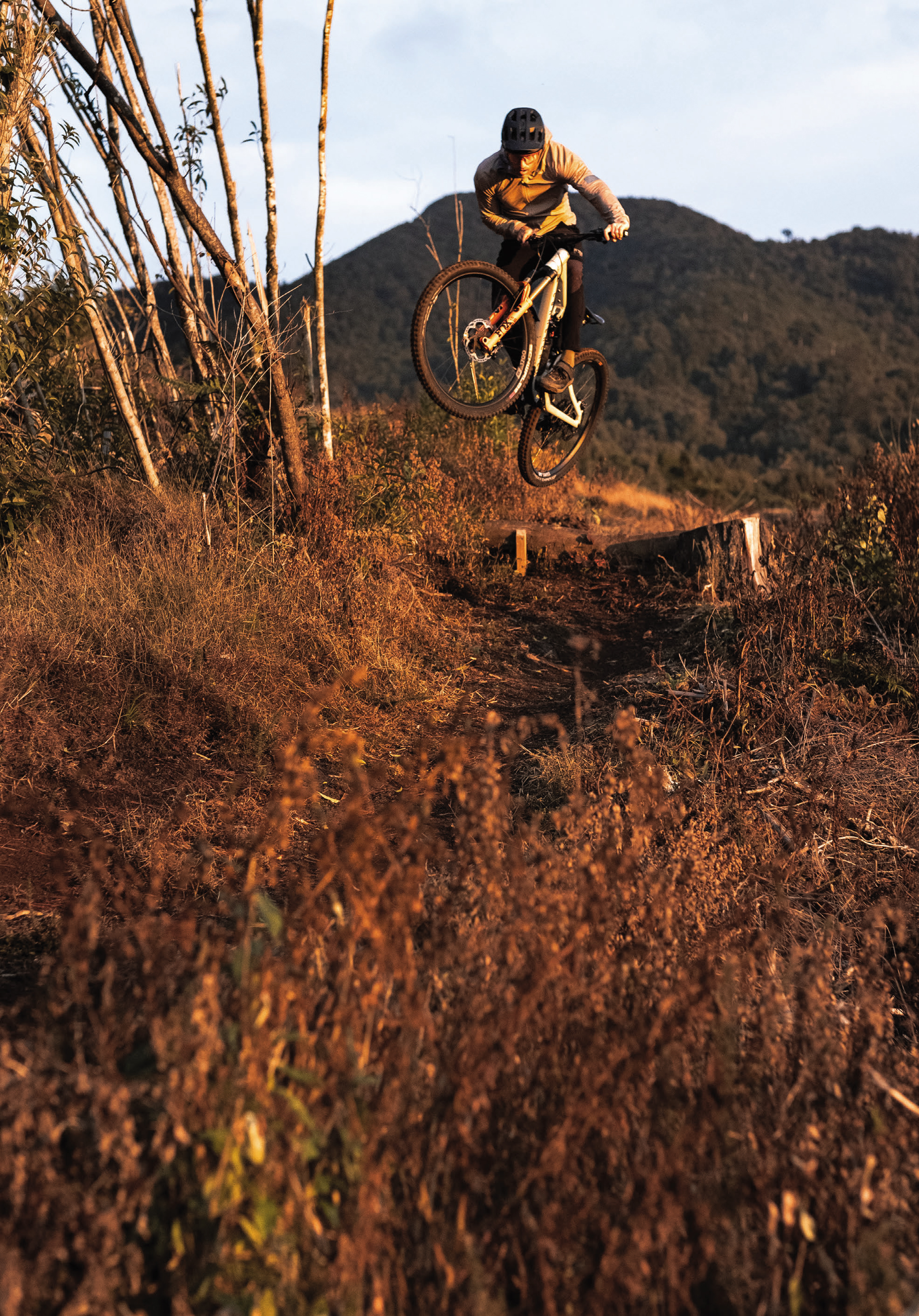
Geometry
Although nothing jumps out as too progressive or outside the realms of sensibility when looking over the geometry chart for the Meta V5, there’s a lot to like. There’s a flip chip on the lower end of the rear shock, and other than a cursory couple of rides in ‘High’ to confirm there’s no massive difference between the two settings. I’ve stuck with the bike in ‘Low’, as I’d imagine most riders would do.
There’s nothing crazy here; I’d point out a middle-ground head angle and reasonably steep seat tube angle. As is becoming customary with Commencal’s bikes, the stack height is above average and pretty big for a medium-sized frame, a trend that seems to be taking hold with some brands.
The Ride:
According to the Commencal size chart, at 176cm tall, I sit right at the top of the Medium recommendation and at the bottom of the Large. With a bike of this ilk and travel category, I chose to go smaller rather than larger, and settled on the Medium size.
A couple of weeks after exchanging a emails with Commencal about how and where I ride, how long I’ve been riding, and what sort of rider I consider myself to be, a pre-tuned Meta V5 arrived on my doorstep. Frothing to get out, I quickly mounted the handlebars in the stem, attached the front wheel, and was good to go; the assembly only took about five minutes, including removing the bike from the box. A quick driveway test confirmed the supplied setup felt like it was in the ballpark of where I’d like it to be; they’d even trimmed the bars to my preferred 760mm width — bonus.
To give my thoughts some context, compared to my usual ride, this bike comes in at 10mm less travel on either end, a 14mm shorter reach, a 10mm higher stack, a 2-degree steeper seat tube, and almost equal chainstay length and head angles. Considering the 30mm riser bar, my hands end up roughly 30mm higher than my bike – quite a lot. Weight-wise, the Commencal comes in a little heavier, but not by an amount that makes a difference to anything; it adds to the feeling of stability. Considering how similar the geometry is between my bike and the Meta V5, they’re poles apart in how they ride.
I get on some bikes, and everything clicks immediately; this was one of them. Although I initially felt the shorter reach and higher front end compared to my bike, I quickly forgot these differences and was comfy on the bike after just a couple of runs down a trail. Not once have I felt like I wasn’t in the correct position on the bike or had to shift to a particular body position to get the bike to do what I wanted; everything just seems to click nicely, and now has me questioning my usual setup.
The suspension settings, as supplied, 71 psi in the fork and 177 in the shock, were ideal for getting to grips with the bike; nice and balanced, with no surprises. A couple of rides in, as I got used to the bike and speeds increased, I added a little air pressure front and rear and, taking this into account, slowed the rebound and added a click of compression damping to both front and rear. The Meta V5 is a full-gas Enduro bike and, although optimised for descending, you still have to make it to the top of a hill before heading back down. The Meta V5 is not a spritely climber, but it gets there. Out of the saddle, while under power, the suspension firms up substantially and gives an excellent platform to push against, i.e. when tackling steep technical climbs or sprinting over a punchy climb, it does both well. When I’m ticking my way up a gravel road or a long, smooth single-track climb, I’m immediately reaching for the lockout on the shock; the firm pedalling platform and steep seat tube make the climbing position comfortable and efficient.
Descending is a dream, highlighting some savvy design and an equally impressive suspension package. The VCS linkage is a virtual pivot linkage offering super plush suspension that’s supple off the top, offering wicked levels of grip; through the mid-stroke, it feels pretty linear but still has a good level of support. Even though it has 150mm of rear travel, it feels more over big hits or flat drops as it firms right up at the end of the stroke, preventing any harsh bottom outs, and I can’t think of a time when I’ve actually felt an abrupt end of the travel.
With all the links and pivots involved in the VCS, the rear end of the bike is quite wide to accommodate it all. It’s so wide, in fact, that it’s quite normal to drag my legs on it while riding. Not to the point of being annoying, but it’s noticeable and will inevitably rub and mark the frame over time. Fortunately, the bike I received has a tidy ride-wrap installed, so the paint isn’t affected.
I find the front end stiffer than many bikes, and the suspension works in combination with this front-end rigidity and the flex of the back end to provide a ride that’s quite unique, but only in good ways. While charging through rough sections, the bike remains composed with amazing stability and with no harshness or the feeling of being deflected off obstacles or ‘pinged’ off square edges. The chassis floats across the chunder, reacting more to rider input than the trail feedback. Thanks to this, I felt less fatigue on long descents, feeling there was no need to wrestle the bike to stay on line or keep it where I wanted, I could just stand centred on the bike and let it do the work.
Considering the weight, travel and reasonably linear mid-stroke suspension kinematics, the Meta is surprisingly lively and is fun to pop off trail features and manual through sections; even though it’s such a sled, it strikes a surprising balance of high-speed downhill capability and mellow trail cornering agility and playfulness.
The overall balanced feel lends itself to aggressive and controlled cornering. Initiating turns or quickly changing direction is simple, not requiring any dramatic weight shifts to maintain traction.
Adding to the predictability and stability is some well-engineered flex in the back end, that works in harmony with the suspension. Much like the Cannondale Habit LT I reviewed a few months back, there’s an amount of lateral flex in the swingarm. Still, tuned compliance has significant advantages, particularly at this mid-travel level. It helps keep the bike composed in the rough and gets across off-camber more smoothly by assisting the wheel to stay on the ground rather than being deflected off bumps (where stiffer bikes would rely more heavily on just the suspension to move the wheel). I’m not sure this trait is necessarily faster in itself, but the resulting reduction in fatigue over the long run is certainly noticeable.
One thing that struck me early on was how quiet the bike is. Thanks to substantial chainstay and seat stay bumpers and tidy cable routing, the bike maintains a nice, dull sound when on the trails. By the look of those bumpers, the chain is still hitting them while slapping around, but they’re doing their job well and keeping sounds muted.
On my second ride, the frame developed the dreaded and much-publicised creaking in one of the pivots. Considering the bike had a pre- review strip down and grease, this was quite a surprise. Thankfully, after going through the involved process of getting to each pivot bolt and re-tightening them (it’s a total faff to do), the creak faded out. It seems the pivots will need some attention every 4-6 weeks, depending on the conditions they’re ridden in. I’ve had similar experiences on other alloy bikes in the past, and it seems to be part and parcel of alloy frames; when compared to a carbon frame, a bit more care and attention are necessary to keep pivots clean, tight, and creak-free, this Commencal is no different.
I’m not a fan of the Fidlock drink bottle that was supplied. Unfortunately, without customising a bottle cage, there’s no way to carry another bottle style in the front triangle. It’s much fiddlier than a standard bottle to put back in its holster after a sip. The saddle isn’t terrible, but it’s on the firmer end of the scale and, after a couple of hours pedalling up hills, it doesn’t agree with my backside; it may be my preference, but I’d like something a bit softer.
Like many others, the Commencal product managers missed a beat when it comes to the dropper post. At 175mm, it’s not the shortest drop around but, even with my 720mm seat height, a 200mm post would fit. Adjustable dropper posts are available, and I’d love to see one on this bike to maximise the drop and allow riders to fine-tune it to their needs.
The DT Swiss EX1700 wheelset hasn’t skipped a beat, and I continue to be impressed by DT’s pre-built wheelsets. The Schwalbe Tacky Chan tyres have been great for conditions at my local riding spots recently. The Ultra Soft (front) and Soft (rear) are a perfect combination, providing excellent traction in all scenarios and trails I’ve had them on. All things considered, they roll surprisingly well, although they’re showing signs of wear pretty quickly. I’ll be interested to see how they go in proper mud rather than the hero dirt of late, particularly as they’ve already lost their square edges.
Final thoughts
Riding the Meta confirmed that the old adage “fast is fun, fun is fast” couldn’t be truer for this bike. It’s easy to get it to go fast downhill, and I’ve found myself off the brakes through sections I’m usually slightly more apprehensive about. Combine this increased confidence with the agility and playfulness of the bike, and it ticks a lot of boxes for me. If you’re considering a new ride, the Meta V5 would be worth considering and, provided you’re happy to keep the rear end serviced, I’d confidently say that — much like me — you’d be stoked on this bike!
